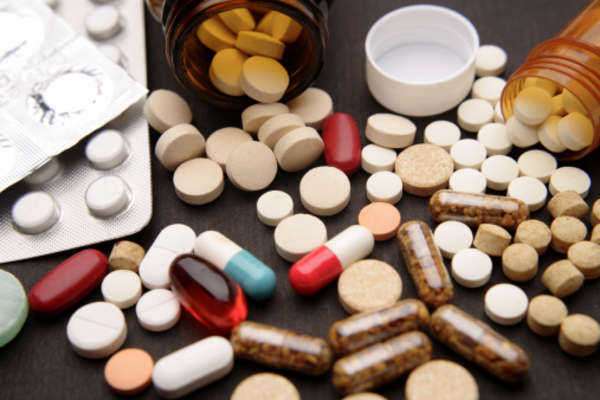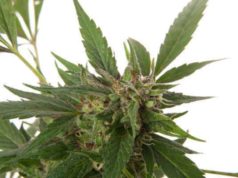
Depressants are substances that are regulated by the Controlled Substances Act because they cover a wide variety of drugs and substances and have some serious effects on the human body. Depressants may defined as drugs or substances that slow down or hinder the normal function of the central nervous system. Depressants can be said to be the polar opposites of stimulants, also another category of controlled or illegal substances.
There exist various kinds of depressants, each having their own characteristics or effects that in general describe what depressants can do to the body. Some of the immediate effects of consuming depressants are:
Lowered blood pressure and heart rate
Sedation
Impaired coordination, memory, and judgment
Drowsiness
Slurred Speech
Respiratory depression
Anesthesia
Anxiolysis
The various types of depressants can produce all or some of the effects listed above, depending on the type. There are four general groups of depressants as recognized by the Controlled Substances Act: alcohol, barbiturates, Benzodiazepines, and miscellaneous drugs such as Flunitrazepam. Alcohol is most likely the most widely-consumed as well as the most socially and culturally accepted.
Alcoholic beverages contain ethanol and the alcohol content will vary depending on the type of alcohol, such as beer, wine, and spriits and liquors. Beer and wine will generally have the lowest concentration of ethanol levels, while spirits and liquors will have the greatest, also varying depending on the type, manufacturer, or brand name.
Alcohol seems to be the most socially acceptable and attainable of the controlled substances because it is a legal substance and has become part of American culture because the role it plays in social interactions. Alcohol tends be able to lower people's inhibitions and more open to a social environment. Alcohol as a social tool can prove to be relatively harmless when consumed in moderation. However, the addiction to alcohol, or alcoholism, is a very dangerous and health-damaging condition that is medically considered as a disease.
Alcohol has short-term and long-term effects. On the short-term, intoxication, dehydration, and alcohol poisoning are all potential effects on the body, ranging from least to most hazardous. Long-term effects can prove to be much more serious, even though alcohol poisoning is potentially fatal. Brain disease, heart disease, dementia, cancer, cirrhosis, stroke, and alcoholism are all possible effects of the substance, each having fatal capabilities.
A further concern about alcohol is the problem with drunk driving. Drunk driving not only proves to be a hazard to the person drinking and driving, but also to innocent bystanders and other motorists on the road. 39% of vehicle-related deaths are due to drunk driving. Such an alarming rate justifies why alcohol is a controlled substance, even though it is not considered an illegal substance.
Barbiturates are drugs that may commonly be known as sedative-hypnotics. They are usually prescribed for the treatment of anxiety and insomnia. Typically speaking, barbiturates are depressants that can be ingested orally in the shape of a pill, but are also found in powder and liquid form. When used as prescribed, barbiturates are extremely effective, but they are also highly physically and psychologically addictive.
The development of a tolerance and dependence to this type of drug is well documented. Some immediate effects include lack of coordination, difficulty breathing, slurred speech, lack of judgment, and slowed speech. An overdose of barbiturates can easily end in a coma or death. Individuals sometimes abuse the drug because it has a similar effects as alcohol intoxication, with moments of relaxation or minor euphoria.
Examples of barbiturates include Amytal, Nembutal, and Phenobarbital. These types of drugs are not as commonly used or prescribed for medical purposes because the benefits were being overshadowed by the negative effects of the drugs. They are rarely applied today, but are used in severe cases of insomnia or in conjunction with other treatments at reduced dosages. Eventually, barbiturates would be replaced by Benzodiazepines, which are also a type of depressant.
Benzodiazepines are most commonly used as tranquilizers and muscle relaxers. They have effectively replaced barbiturates in the treatment of anxiety, insomnia, seizures, muscle spasms, panic disorders, and alcohol withdrawal. Short-term effects include drowsiness, decreased concentration, lack of alertness, and dizziness.
Sometimes, benzodiapines have been known to produce opposite effects of what the drug is intended to do. Aggression, violence, impulsiveness, and suicidal behavior have been documented as occurring. Some long-term effects may include loss of sex-drive, agoraphobia, social phobia, depression, and cognitive impairment. In pregnancy, it has been reported that the drug may intravenously enter the unborn child and that the drug may also be passed to breast feeding.
This type of drug is most often found in pill form to be ingested orally. Prescriptions of benziodiazepines are strictly regulated because of the frequency in which it is often abused. Examples in include Valium and Xanax.
Flunitrazepam is a similar type of barbiturate that also comes in pill form and has similar effects. However, its use as a sedative to commit sexual assault and "date rape" have become a growing concern. Commercially known as Rohypnol, or "roofies," they cause similar sensations of relaxation and sedation, but also may lead to visual and gastrointestinal disturbances, as well as memory loss and lack of judgment.
It is not uncommon for abusers of barbiturates to mix depressants other depressants, such as alcohol, which is extremely dangers. The central nervous system can shut down entirely in an overdose of barbiturates.





















